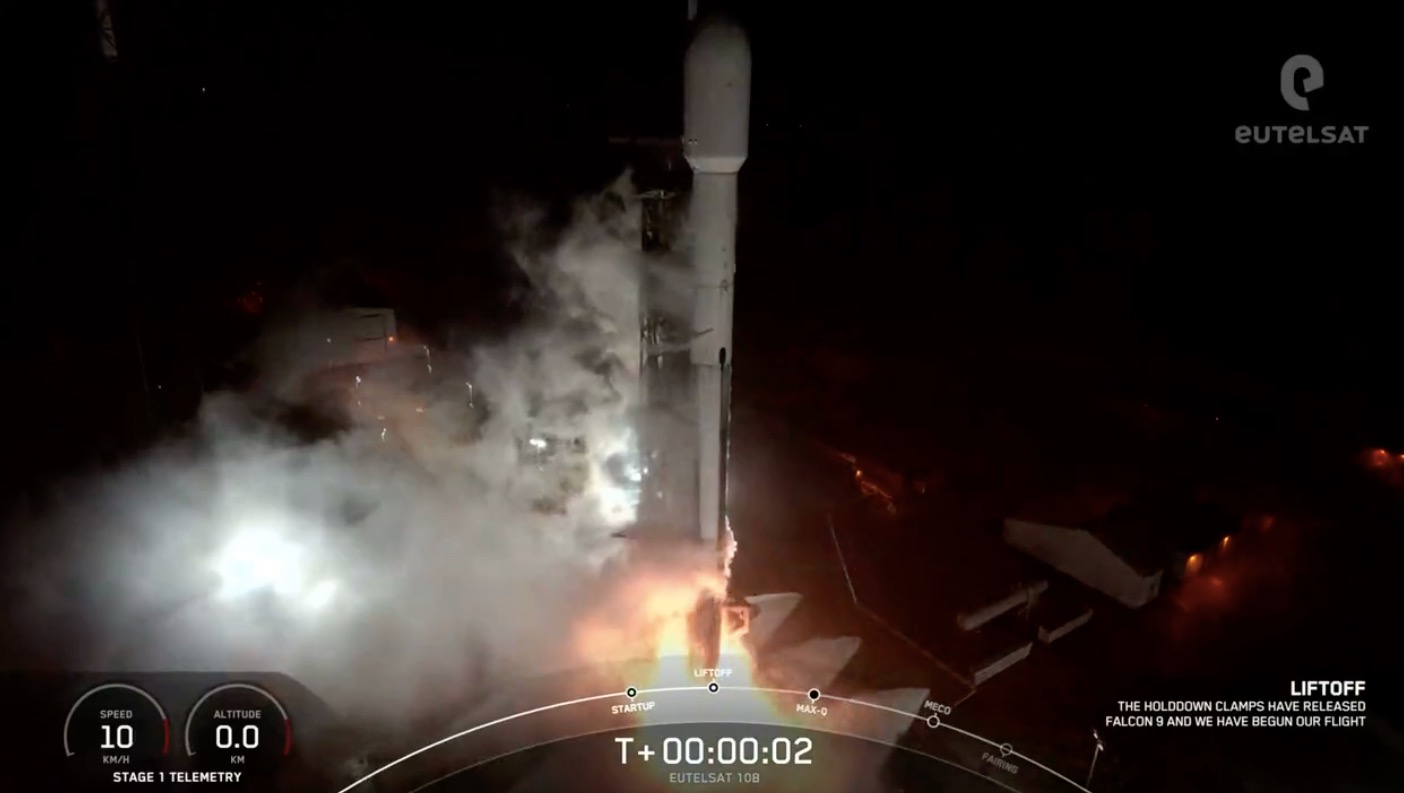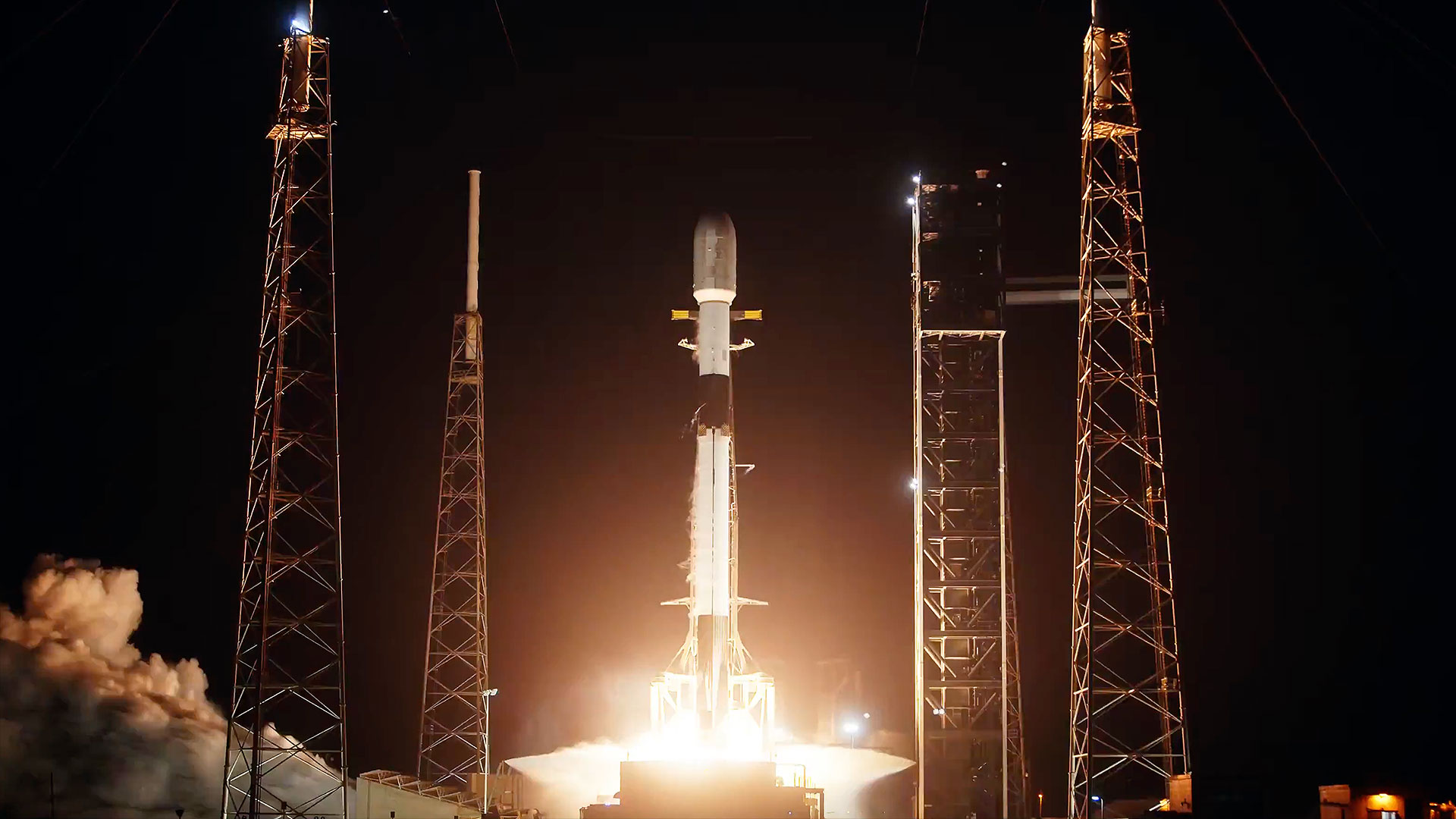SpaceX launches Eutelsat 10B communications satellite (video)
SpaceX launched a communications satellite to space Tuesday (Nov. 22) to serve air and sea traffic.
SpaceX used a Falcon 9 rocket to launch the Eutelsat 10B satellite on behalf of Eutelsat Tuesday (Nov. 22) at 9:57 p.m. EST (0257 on Nov. 23 GMT).
This was the 11th launch for this Falcon 9 first stage, according to SpaceX.
"The Falcon 9 first stage booster supporting this mission previously launched Telstar 18 Vantage, Iridium-8 and eight Starlink missions," SpaceX wrote in a mission description. (Starlink is SpaceX's series of internet satellites, with more than 3,000 currently active in orbit.)
In pictures: The evolution of SpaceX rockets

There will be no further flights for the Falcon 9's first stage, however; the booster did not come back to Earth for a landing.
The Falcon 9's upper stage deployed Eutelsat 10B as planned into a geostationary transfer orbit about 35.5 minutes after liftoff. The satellite will nowmake its own way to a geosynchronous orbit, meaning that it will orbit the Earth in such a way to consistently gaze at one part of the planet below.
Breaking space news, the latest updates on rocket launches, skywatching events and more!
Eutelsat 10B includes a high-capacity communications payload in the Ku-band "in the busiest air and sea traffic zones" over the North Atlantic, Europe, the Mediterranean basin and the Middle East, Eutelsat officials wrote of the mission. A second Ku-band payload will be available for the Atlantic Ocean, Africa and the Indian Ocean.
The satellite also carries two widebeam C- and Ku-band payloads for existing customers upon Eutelsat 10A, Eutelsat officials stated. The new satellite will replace the 12-year-old Eutelsat 10A, which is expected to enter its end of service in 2023 for customers in the Americas and Asia.
Elizabeth Howell is the co-author of "Why Am I Taller?" (ECW Press, 2022; with Canadian astronaut Dave Williams), a book about space medicine. Follow her on Twitter @howellspace. Follow us on Twitter @Spacedotcom or Facebook.

Elizabeth Howell (she/her), Ph.D., was a staff writer in the spaceflight channel between 2022 and 2024 specializing in Canadian space news. She was contributing writer for Space.com for 10 years from 2012 to 2024. Elizabeth's reporting includes multiple exclusives with the White House, leading world coverage about a lost-and-found space tomato on the International Space Station, witnessing five human spaceflight launches on two continents, flying parabolic, working inside a spacesuit, and participating in a simulated Mars mission. Her latest book, "Why Am I Taller?" (ECW Press, 2022) is co-written with astronaut Dave Williams.
